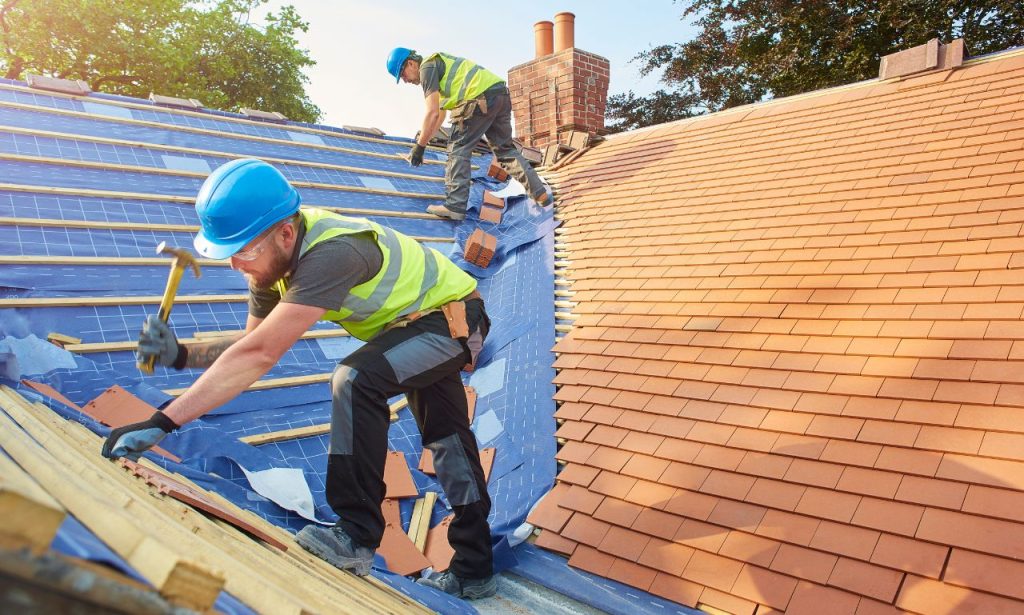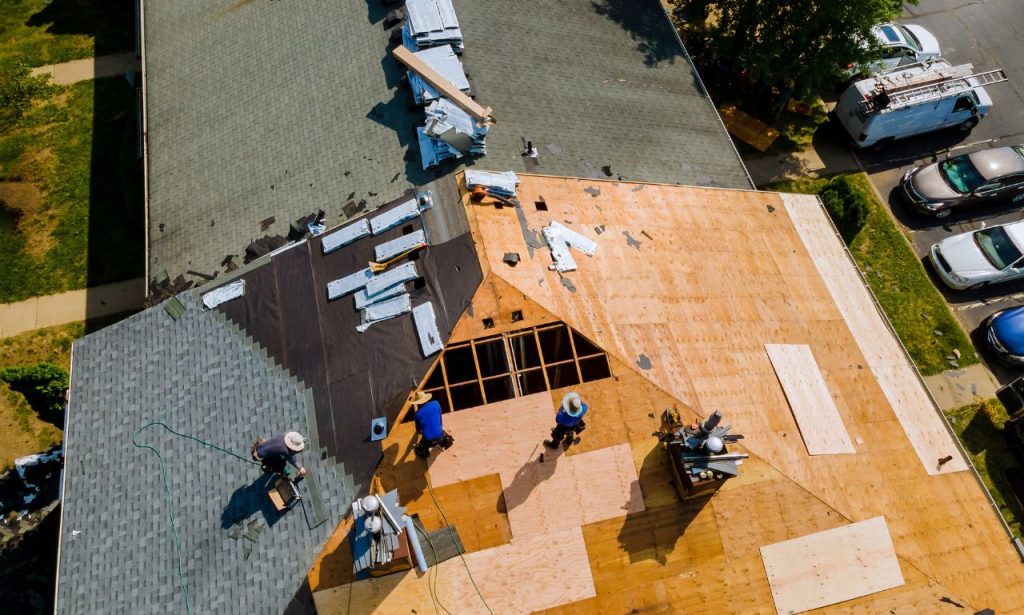When you’re contemplating a roof replacement in Ohio, the question “how much does a new roof cost in Ohio?” is likely at the forefront of your mind. Roofing is a significant investment, and understanding the various factors influencing the cost can help you make an informed decision. This comprehensive guide will delve into every aspect of roofing costs in Ohio, providing you with detailed insights that go beyond the standard articles you’ll find elsewhere.
Factors That Influence Roof Replacement Cost
Material Choices
The type of roofing material you choose is one of the most significant factors affecting the cost. Different materials come with varying price tags, durability, and aesthetic appeal. Common materials include asphalt shingles, metal roofing, slate, wood shakes, and tile. Each has its pros and cons, and the choice can significantly impact your budget.
- Asphalt Shingles: These are the most common and economical option, costing between $3.50 to $5.50 per square foot.
- Metal Roofing: Known for its durability, metal roofing can cost between $5.50 to $12 per square foot.
- Slate: This premium option can cost anywhere from $15 to $30 per square foot but offers unmatched longevity.
- Wood Shakes: These provide a natural look and cost between $6.50 to $11 per square foot.
- Tile: Tiles are durable and aesthetically pleasing but can be expensive, ranging from $8 to $15 per square foot.
Labor Rates

Labor costs can vary depending on the region and the complexity of the job. In Ohio, you can expect to pay between $40 to $80 per hour for professional roofing services. The total labor cost will depend on the time required to complete the project, which is influenced by the size and complexity of your roof.
Size and Complexity of the Roof
The overall size and architectural complexity of your roof significantly impact the cost. Larger roofs require more materials and labor, while complex designs with multiple facets, steep pitches, and unique features will also increase the cost due to the additional time and effort required.
Comparing Different Roofing Materials and Their Costs
To provide a clearer picture, here’s a comparative table of different roofing materials and their estimated costs:
| Roofing Material | Cost per Square Foot | Average Lifespan | Maintenance Requirements |
| Asphalt Shingles | $3.50 – $5.50 | 15-30 years | Low |
| Metal Roofing | $5.50 – $12.00 | 40-70 years | Low |
| Slate | $15.00 – $30.00 | 75-100 years | Low |
| Wood Shakes | $6.50 – $11.00 | 30-40 years | Moderate |
| Tile | $8.00 – $15.00 | 50-100 years | Low |
Estimating the Cost of a Roof Replacement in Ohio
Estimating the cost of a roof replacement involves several steps:
- Measure the Roof Area: Calculate the total square footage of your roof.
- Choose the Material: Select the roofing material that fits your budget and needs.
- Calculate Material Costs: Multiply the total square footage by the cost per square foot of your chosen material.
- Factor in Labor Costs: Estimate the labor cost based on the complexity and size of the roof.
- Include Additional Costs: Consider costs for permits, disposal, and any other potential expenses.
Roof Pitch
The pitch or slope of your roof can affect both the cost of materials and labor. Steeper roofs are more challenging to work on and may require additional safety equipment and labor time, thereby increasing the overall cost. Roofs with a low pitch are generally easier and cheaper to replace.
Structural Repairs
Before installing a new roof, any underlying structural issues must be addressed. This could include replacing damaged plywood, fixing leaks, or reinforcing the roof structure. Structural repairs can add significantly to the overall cost but are essential for the longevity and safety of your new roof.
Effects of Weather Conditions
Ohio’s weather can be unpredictable, with harsh winters and hot summers. These conditions can affect the longevity and performance of your roofing material. For instance, asphalt shingles may wear out faster under extreme temperature fluctuations, while metal roofing can withstand severe weather but may require additional insulation.
Selecting a Reliable and Reputable Roofing Contractor
Choosing the right roofing contractor is crucial for a successful roof replacement. Look for contractors with:
- Licensing and Insurance: Ensure they are licensed and have adequate insurance coverage.
- Experience and Reputation: Check their track record and read reviews from previous clients.
- Detailed Estimates: Request detailed written estimates to understand the breakdown of costs.
- Warranties: Opt for contractors who offer warranties on both materials and workmanship.
What is the Average Cost to Replace a Roof in Ohio?
The average cost to replace a roof in Ohio typically ranges from $5,000 to $10,000, depending on factors like the size of the roof, the materials chosen, and the complexity of the installation. Asphalt shingles, being the most common and economical choice, usually fall on the lower end of this spectrum, while premium materials like slate or metal can push costs higher.
How Often Should You Replace Your Roof in Ohio?

The frequency of roof replacement in Ohio depends on the type of roofing material used. Asphalt shingles generally need to be replaced every 15-30 years, while metal roofs can last 40-70 years. More durable options like slate or tile can last 75-100 years. However, harsh weather conditions and proper maintenance also play significant roles in determining a roof’s lifespan.
Will a New Roof Increase Home Value?
Yes, installing a new roof can significantly increase your home’s value. A new roof not only enhances curb appeal but also assures potential buyers of the home’s structural integrity and reduced future maintenance costs. According to industry experts, homeowners can expect to recoup about 60-70% of the roof replacement cost in increased home value.
What is the Most Expensive Part of a New Roof?
The most expensive part of a new roof is typically the roofing material itself, especially if you opt for premium options like slate, copper, or high-end metal. Labor costs can also be substantial, particularly if the roof has a complex design or steep pitch that requires additional safety measures and extended time for installation. Structural repairs and upgrades to the roofing system can further add to the overall expense.
Conclusion
Replacing your roof is a significant investment, and understanding the various factors that influence the cost can help you make an informed decision. By considering material choices, labor rates, roof size, pitch, structural repairs, and weather conditions, you can estimate the total cost of your new roof in Ohio accurately. Additionally, selecting a reliable and reputable roofing contractor ensures that the job is done correctly and efficiently.
ALSO READ: What Causes a Cracked Cylinder Head
FAQs
The frequency of roof replacement depends on the material used. Asphalt shingles typically last 15-30 years, metal roofs 40-70 years, slate 75-100 years, wood shakes 30-40 years, and tile 50-100 years.
Signs include missing or damaged shingles, leaks, water stains on ceilings or walls, and significant granule loss from shingles.
In some cases, you can install a new layer over an existing one, but it’s not always recommended. Consult a professional to determine the best approach.
Permit requirements vary by locality. Check with your local building department to understand the necessary permits for your project





